Unscientific fantasy: boosters, Larrabee and multi-core systems
" 5 weeks with Intel " and another week on Habrahabr dedicated to HPC and supercomputer computing, continues with the second part of the story about the headquarters of Intel Labs.

One of the leaders of the laboratory, Jerry Batista, talks about sophisticated algorithms and multi-core systems.

')
“We at Intel Labs are engaged in a variety of tasks, but we agree in one thought - I think that in the future a universal processor that performs a wide range of tasks (what is now called CPU) will not be enough. It seems to us that various accelerators and specialized microchips for various tasks will enter into use: encoding, decoding, cryptography, computer vision, motion calculation, sampling of textures, and so on. But the question is - how to combine all this in the same device, how to hide from the programmer the fact that all these microchips work in their own specialized environment? Or even say so - how to give the programmer a convenient and simple toolkit in order to easily integrate all these solutions in a single heterogeneous system? We are seriously asking this question, so we are developing in several directions at once, which relate to memory modules, code execution models, programming models, various APIs and so on - I think all these developments are especially important in the case of mobile platforms. ”

Jerry and I are standing in one of the many rooms (and in fact - large cubicles) laboratories. Several silicon wafers, a microscope, several computers, and on the walls there are billboards with descriptions of various laboratory projects. At first glance, the projects involved in Intel Labs may seem scattered and too futuristic, but after Jerry's words you understand that the company has a big serious plan, and all these projects are only a mosaic of the plan.

One of the projects of Intel Labs may be embodied in the joint development of Google TV - it is an ingenious algorithm that recognizes the faces of sports players, their shape, names, club logos, movement, assists and goals themselves; As a result of his work, a long football match shrinks to several minutes, in which the most interesting happens. Jerry explains: “In the future, our televisions will have hundreds of thousands of channels, so there is some sense in giving the user the opportunity to watch only the most interesting moments of the sports program. Now these moments are mounted manually, but we think that this difficult process can be computerized. ” Details you can see in the first "sports" episode of the joint program of Intel and Sky Television .

Another project uses equally sophisticated algorithms to build one set of high-resolution frames from a set of low-resolution video frames, on which additional details can be recognized. “Conventional interpolation methods, such as cubic, do not work here,” explains Jerry, “but through complex analysis, subpixel information can be extracted from the image by statistically removing noise. However, this is a very serious calculation that requires a powerful multi-core system. ” Such algorithms can help, for example, in forensic science, recognizing images of poor quality, re-reshoot which there is no possibility.
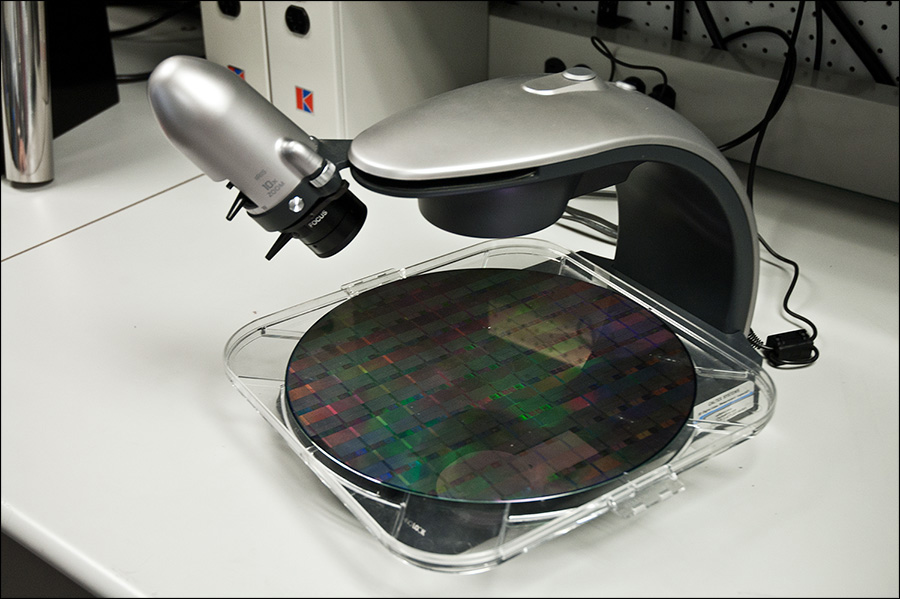
Pay attention to the silicon wafer with processors, lying on the table. “And this is Rock Creek, what we later called Single-Chip Cloud Computer. We already had a multi- core Polaris experimental processor on the Terascale project, it had 80 cores, and for its time it was a hoo achievement, but we were not very happy with it, because technically it was just a floating point calculator, not supporting the set of instructions IA and, accordingly, not able to work as a full-fledged central processor. Rock Creek corrects this flaw because it consists of 48 cores with an IA-32 architecture; if you install it together with a specialized motherboard into a computer and install Windows on it, the system will work ”:
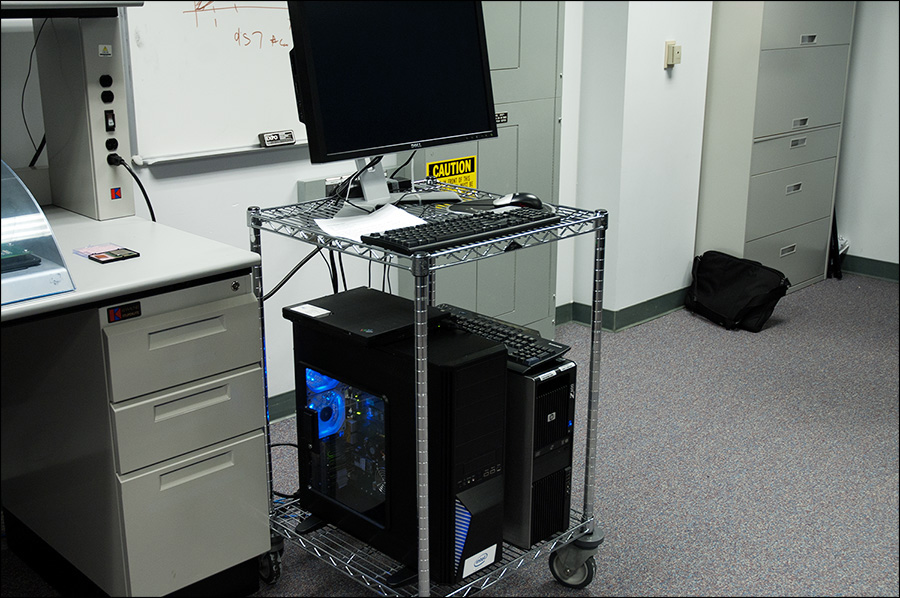
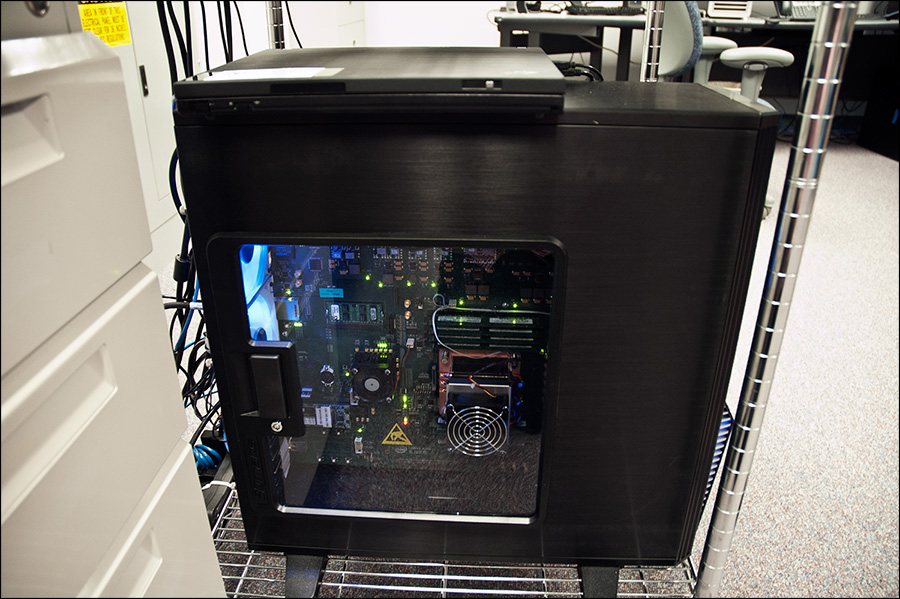
In the corner of the cubicle on its side lies a pretty azure-colored system block, and I wonder what it is. It turns out that this is the Larrabee SDK, a special computer for testing the Larrabee accelerator, which is now becoming part of the Intel Many Integrated Core supercomputer architecture .
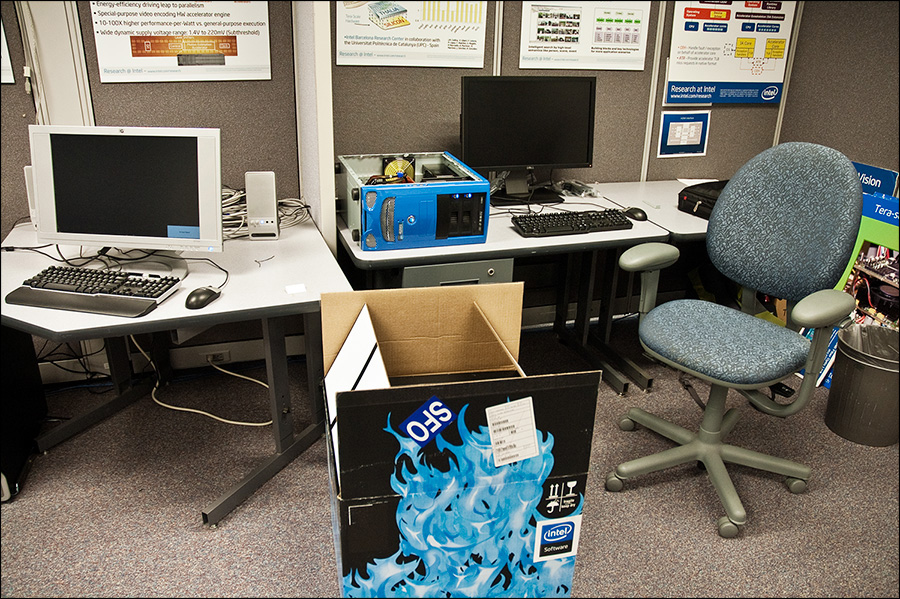
In the next room there are huge FPGA modules with test cores, connected by dozens of thick wires, like an antique analog synthesizer. They can not be photographed, this design, emulating future multi-core processors Intel. I ask why so much noodles between separate FPGA blocks. "We are looking for the optimal configuration for the connection of cores and memory inside a multi-core system," says Jerry. “Ring layout? An ordered grid? Any complicated weaving? We do not know this yet, but we have certain considerations that we check. ” The modules have a webcam on a motorized leg, Jersey explains that using this camera (and turning the leg) colleagues from Germany can monitor the progress of work and ask to change something in the FPGA network topology, if necessary. A few weeks after our conversation, Intel will announce the MIC architecture, another thing is that there are much more installations with FPGA modules in the laboratory - this is where the future is designed.
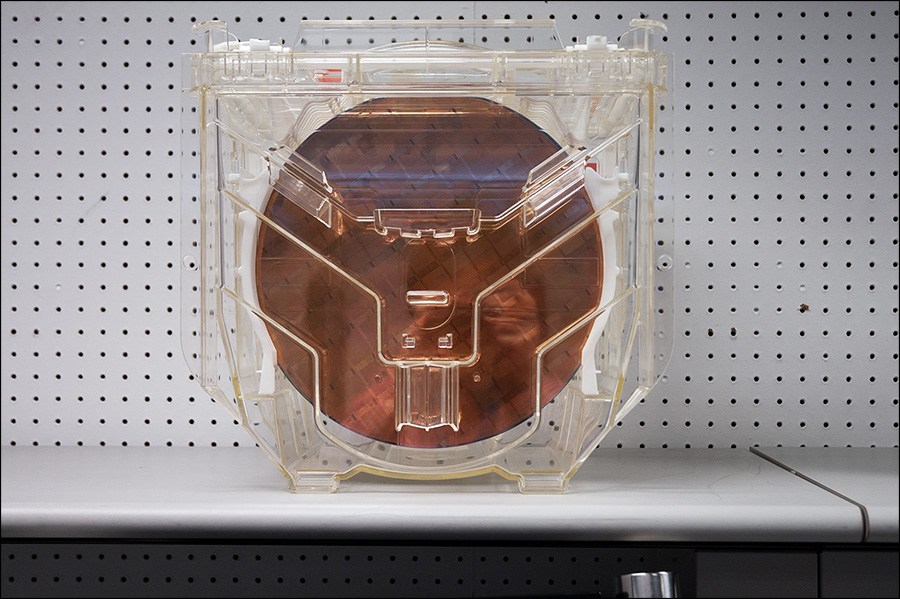
Optimus Prime says hello
Once a year the laboratories of the corporation hold an exhibition of achievements called Research @ Intel Day; reporting from there is the best way to look into the very future that laboratories are involved in. Last year , the focus was on energy-efficient mobile devices (which turned into a real product in less than a year!), Power transmission over a distance, and three-dimensional Internet. At Research @ Intel Day this year, which took place just a few days ago, a smart electric car, a home robot, neural interfaces, and a whole series of prototypes of input-output devices other than mouse, keyboard, and touch panels.
 Do not hesitate to connect to the blog of Intel on Habré.
Do not hesitate to connect to the blog of Intel on Habré.
Thank you for your attention, to be continued.
Successes!

One of the leaders of the laboratory, Jerry Batista, talks about sophisticated algorithms and multi-core systems.

')
“We at Intel Labs are engaged in a variety of tasks, but we agree in one thought - I think that in the future a universal processor that performs a wide range of tasks (what is now called CPU) will not be enough. It seems to us that various accelerators and specialized microchips for various tasks will enter into use: encoding, decoding, cryptography, computer vision, motion calculation, sampling of textures, and so on. But the question is - how to combine all this in the same device, how to hide from the programmer the fact that all these microchips work in their own specialized environment? Or even say so - how to give the programmer a convenient and simple toolkit in order to easily integrate all these solutions in a single heterogeneous system? We are seriously asking this question, so we are developing in several directions at once, which relate to memory modules, code execution models, programming models, various APIs and so on - I think all these developments are especially important in the case of mobile platforms. ”

Jerry and I are standing in one of the many rooms (and in fact - large cubicles) laboratories. Several silicon wafers, a microscope, several computers, and on the walls there are billboards with descriptions of various laboratory projects. At first glance, the projects involved in Intel Labs may seem scattered and too futuristic, but after Jerry's words you understand that the company has a big serious plan, and all these projects are only a mosaic of the plan.

One of the projects of Intel Labs may be embodied in the joint development of Google TV - it is an ingenious algorithm that recognizes the faces of sports players, their shape, names, club logos, movement, assists and goals themselves; As a result of his work, a long football match shrinks to several minutes, in which the most interesting happens. Jerry explains: “In the future, our televisions will have hundreds of thousands of channels, so there is some sense in giving the user the opportunity to watch only the most interesting moments of the sports program. Now these moments are mounted manually, but we think that this difficult process can be computerized. ” Details you can see in the first "sports" episode of the joint program of Intel and Sky Television .

Another project uses equally sophisticated algorithms to build one set of high-resolution frames from a set of low-resolution video frames, on which additional details can be recognized. “Conventional interpolation methods, such as cubic, do not work here,” explains Jerry, “but through complex analysis, subpixel information can be extracted from the image by statistically removing noise. However, this is a very serious calculation that requires a powerful multi-core system. ” Such algorithms can help, for example, in forensic science, recognizing images of poor quality, re-reshoot which there is no possibility.

Pay attention to the silicon wafer with processors, lying on the table. “And this is Rock Creek, what we later called Single-Chip Cloud Computer. We already had a multi- core Polaris experimental processor on the Terascale project, it had 80 cores, and for its time it was a hoo achievement, but we were not very happy with it, because technically it was just a floating point calculator, not supporting the set of instructions IA and, accordingly, not able to work as a full-fledged central processor. Rock Creek corrects this flaw because it consists of 48 cores with an IA-32 architecture; if you install it together with a specialized motherboard into a computer and install Windows on it, the system will work ”:


In the corner of the cubicle on its side lies a pretty azure-colored system block, and I wonder what it is. It turns out that this is the Larrabee SDK, a special computer for testing the Larrabee accelerator, which is now becoming part of the Intel Many Integrated Core supercomputer architecture .

In the next room there are huge FPGA modules with test cores, connected by dozens of thick wires, like an antique analog synthesizer. They can not be photographed, this design, emulating future multi-core processors Intel. I ask why so much noodles between separate FPGA blocks. "We are looking for the optimal configuration for the connection of cores and memory inside a multi-core system," says Jerry. “Ring layout? An ordered grid? Any complicated weaving? We do not know this yet, but we have certain considerations that we check. ” The modules have a webcam on a motorized leg, Jersey explains that using this camera (and turning the leg) colleagues from Germany can monitor the progress of work and ask to change something in the FPGA network topology, if necessary. A few weeks after our conversation, Intel will announce the MIC architecture, another thing is that there are much more installations with FPGA modules in the laboratory - this is where the future is designed.

Optimus Prime says hello
Once a year the laboratories of the corporation hold an exhibition of achievements called Research @ Intel Day; reporting from there is the best way to look into the very future that laboratories are involved in. Last year , the focus was on energy-efficient mobile devices (which turned into a real product in less than a year!), Power transmission over a distance, and three-dimensional Internet. At Research @ Intel Day this year, which took place just a few days ago, a smart electric car, a home robot, neural interfaces, and a whole series of prototypes of input-output devices other than mouse, keyboard, and touch panels.
 Do not hesitate to connect to the blog of Intel on Habré.
Do not hesitate to connect to the blog of Intel on Habré.Thank you for your attention, to be continued.
Successes!
Source: https://habr.com/ru/post/98380/
All Articles